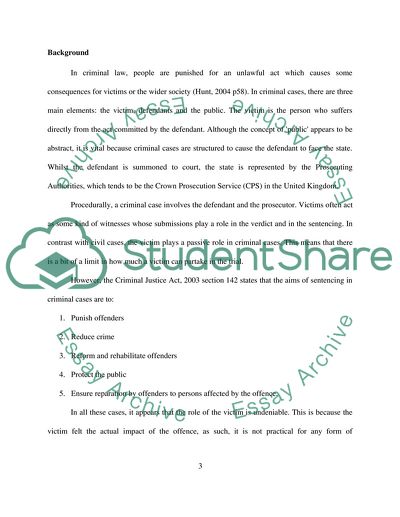Cite this document
(The Role of Victims in the Sentencing Process in English Law: An Research Paper, n.d.)
The Role of Victims in the Sentencing Process in English Law: An Research Paper. Retrieved from https://studentshare.org/law/1776569-the-role-of-the-victim-in-the-sentencing-process-continues-to-generate-controversy-among-scholars-and-practitioners-across-many-common-law-jurisdictions-roberts-and-erez-2010-232-critically-discuss-whether-input-from-victims-and-victims-fami
The Role of Victims in the Sentencing Process in English Law: An Research Paper. Retrieved from https://studentshare.org/law/1776569-the-role-of-the-victim-in-the-sentencing-process-continues-to-generate-controversy-among-scholars-and-practitioners-across-many-common-law-jurisdictions-roberts-and-erez-2010-232-critically-discuss-whether-input-from-victims-and-victims-fami
(The Role of Victims in the Sentencing Process in English Law: An Research Paper)
The Role of Victims in the Sentencing Process in English Law: An Research Paper. https://studentshare.org/law/1776569-the-role-of-the-victim-in-the-sentencing-process-continues-to-generate-controversy-among-scholars-and-practitioners-across-many-common-law-jurisdictions-roberts-and-erez-2010-232-critically-discuss-whether-input-from-victims-and-victims-fami.
The Role of Victims in the Sentencing Process in English Law: An Research Paper. https://studentshare.org/law/1776569-the-role-of-the-victim-in-the-sentencing-process-continues-to-generate-controversy-among-scholars-and-practitioners-across-many-common-law-jurisdictions-roberts-and-erez-2010-232-critically-discuss-whether-input-from-victims-and-victims-fami.
“The Role of Victims in the Sentencing Process in English Law: An Research Paper”, n.d. https://studentshare.org/law/1776569-the-role-of-the-victim-in-the-sentencing-process-continues-to-generate-controversy-among-scholars-and-practitioners-across-many-common-law-jurisdictions-roberts-and-erez-2010-232-critically-discuss-whether-input-from-victims-and-victims-fami.


